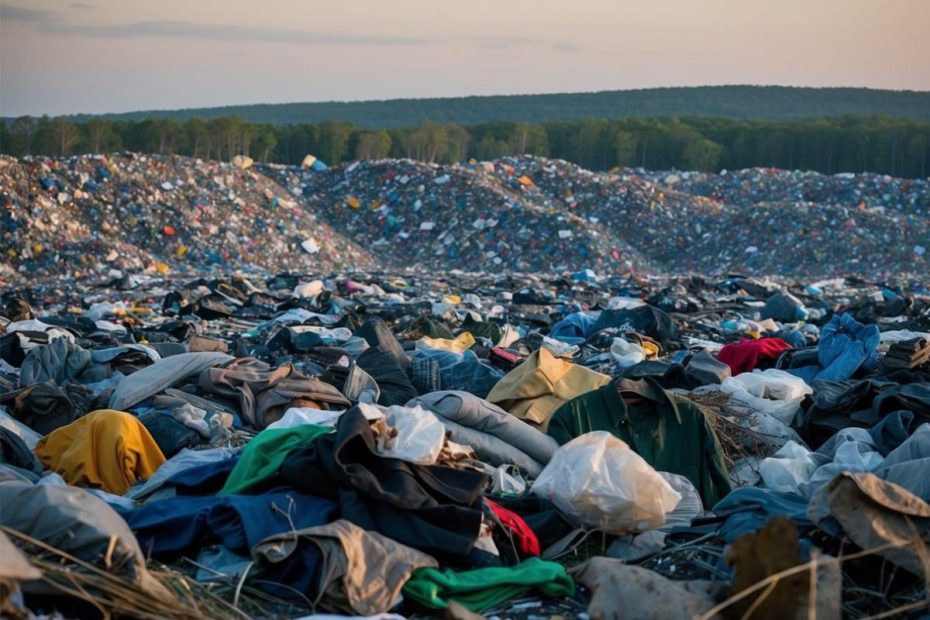The clothes you wear might be harming wildlife more than you think. Fast fashion, with its cheap and trendy garments, has become a big problem for our planet’s creatures.
The fast fashion industry’s rapid growth is causing serious damage to wildlife habitats, polluting water sources, and harming animals both on land and in the sea. From the cotton fields to the factories, and even after you toss that old shirt, the effects ripple through ecosystems worldwide.
You might be surprised to learn that your wardrobe choices can impact forests too. The demand for fashion is skyrocketing, putting pressure on natural resources and the creatures that call those places home.
It’s time to take a closer look at how our love for trendy outfits is affecting the wild world around us.
Key Takeaways
- Fast fashion harms wildlife through habitat destruction and pollution
- Your clothing choices impact ecosystems from production to disposal
- Sustainable fashion options can help protect animals and their homes
Ripping the Fabric of Biodiversity
Fast fashion’s impact on wildlife is far-reaching and severe. Your shopping habits might be harming animals and ecosystems more than you think.
From Fibers to Field: The Fashion Footprint

You might not realize it, but your closet could be a secret deforestation agent. The production of cotton and other fibers is gobbling up habitats faster than you can say “wardrobe malfunction.”
Forests are being cleared to make room for cotton fields and grazing land for sheep. This leaves wildlife homeless and hungry.
Imagine losing your house to make room for a giant t-shirt factory!
Even synthetic fibers aren’t off the hook. Polyester production is an energy-hungry process that contributes to climate change. As temperatures rise, animals have to adapt or face extinction.
It’s like playing a game of musical chairs, but with entire ecosystems at stake.
Wetting the World’s Whistle: Water Woes
Your jeans might look cool, but they’re leaving rivers and lakes feeling blue. Textile dyeing and treatment are thirsty processes that gulp down massive amounts of water.
What’s worse, the wastewater from these processes often ends up polluting water sources. Fish and other aquatic creatures find themselves swimming in a toxic soup.
It’s like trying to breathe in a room full of smoke – not fun for anyone!
Water scarcity is another issue. As fashion production sucks up water resources, wildlife has to compete for what’s left.
Imagine having to share your drinking water with a factory that makes thousands of t-shirts a day.
The Invisible Culprits: Microplastics and Chemicals

Your comfy polyester sweater might be shedding more than just warmth. Every time you wash it, tiny plastic fibers called microplastics escape into waterways.
These sneaky pollutants are like uninvited guests at an underwater party.
Fish and other marine life mistake these particles for food. It’s like trying to eat confetti instead of cake – not very nutritious and potentially harmful.
The chemicals used in textile production are another hidden threat. They can leach into soil and water, affecting wildlife for generations.
It’s a bit like leaving a toxic legacy for animals that never signed up for a fashion show.
Fashion’s Forward Footprint
The fashion industry is changing for the better. New approaches are making clothes more sustainable and ethical. Let’s look at some exciting developments.
Circular Threads: A Revolution in Recycling

You might be surprised to learn that your old t-shirt can become new again. Recycling in fashion is getting a major upgrade. Companies are finding clever ways to turn used clothes into fresh fabrics.
The Ellen MacArthur Foundation is leading the charge for a circular economy in fashion. They’re pushing for clothes that last longer and can be easily recycled.
Lyocell and other cellulosic fabrics are game-changers. These materials come from wood pulp and break down naturally.
No more plastic-based clothes sitting in landfills for centuries!
Dressing Up the Industry: Ethical Fashion and Human Rights
Your stylish outfit shouldn’t come at the cost of someone else’s wellbeing. Ethical fashion is putting people first.
Fair trade practices ensure workers get fair pay and safe conditions. Many brands are now taking corporate social responsibility seriously.
They’re improving working conditions in garment factories.
You can spot truly ethical brands by looking for certifications. These show a company is walking the talk when it comes to human rights.
Waving the Flag for Sustainability: The Slow Fashion Movement
Say goodbye to clothes that fall apart after a few wears. The slow fashion movement is all about quality over quantity.
You’ll find brands focusing on timeless styles that last for years. They use sustainable materials and production methods.
But watch out for greenwashing! Some companies talk a big game but don’t follow through. Do your homework to find truly sustainable options.
Patagonia is a great example of slow fashion done right. They encourage you to repair your clothes and buy only what you need.
